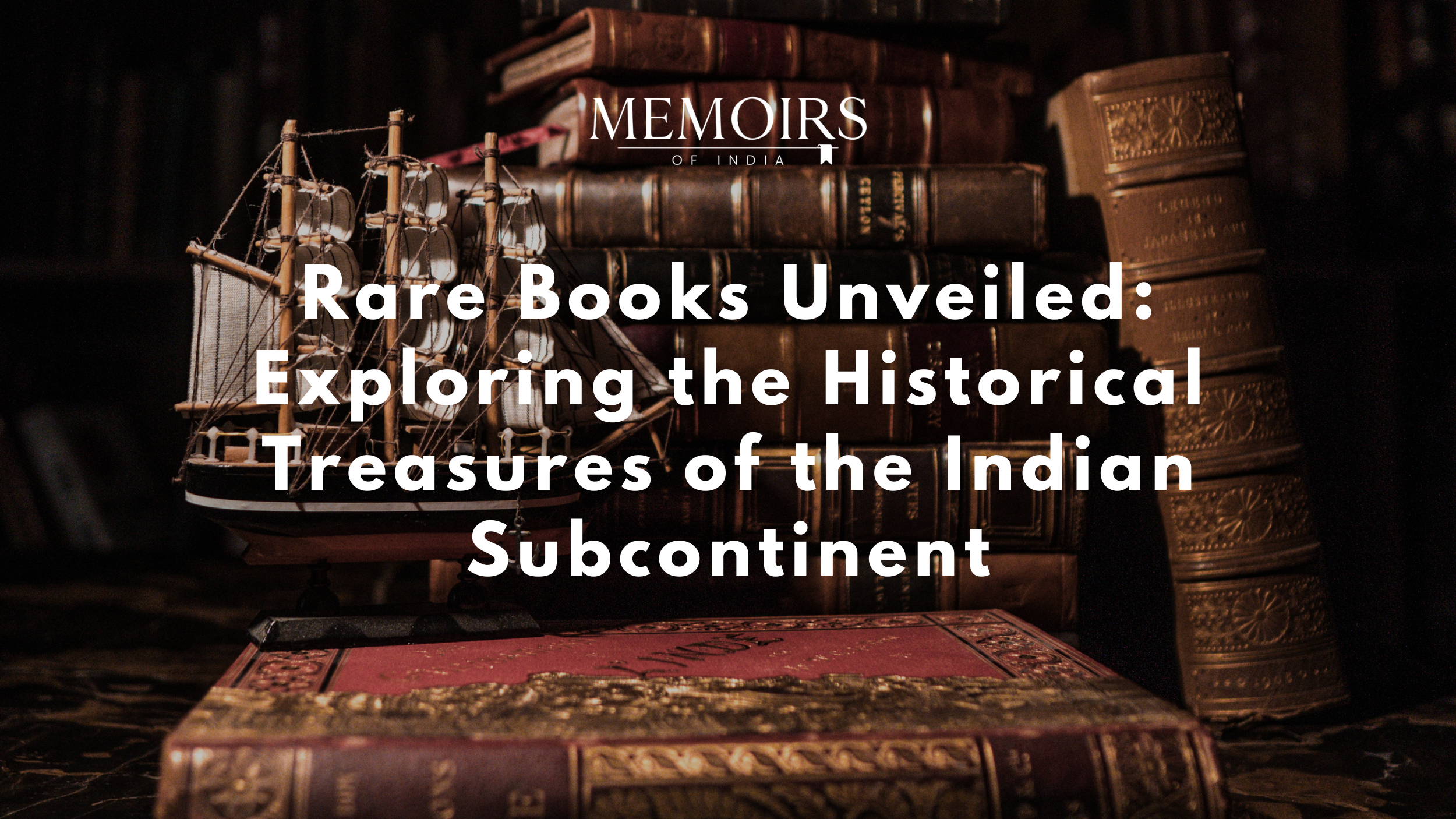Maps have been indispensable tools throughout human history, providing windows to the past and revealing insights into landscapes, cultures, and civilizations. In the context of the Indian subcontinent, rare books, particularly vintage and antique maps, offer an exceptional perspective on the region’s evolution over the centuries. In this article, we will delve into the world of rare books, focusing on vintage and antique maps that showcase the rich history of the Indian subcontinent.
Table of Contents
The Rich History of Mapping
Mapping, both an art and science, has undergone significant evolution over the ages. Early maps were basic and symbolic representations, but as technology and exploration advanced, they became more accurate and detailed.
Antique Books of the Indian Subcontinent
Antique books, specifically maps, provide a glimpse into the colonial and pre-colonial history of the Indian subcontinent. Crafted by European cartographers, explorers, and surveyors who ventured into India, Sri Lanka, Pakistan, and Bangladesh, these books unfold a fascinating narrative.
a. Early European Explorations
Take, for example, the 16th-century map of India by Portuguese cartographers, a prime specimen of early European exploration. It often depicted India as a land of riches, intricately detailing major cities and trading ports.
b. The Mughal Empire
The Mughal Empire’s cartographic efforts resulted in beautifully illustrated maps with intricate details of gardens, forts, and palaces. These maps provide insights into the flourishing arts, culture, and architecture of the Mughal era.
c. British Colonial Maps
During the 18th and 19th centuries, as the British Empire expanded, detailed maps of India were created to facilitate administration, trade, and transportation. Many vintage maps from this era are still in circulation, offering valuable historical information.
The Evolution of Cartography
The development of cartography in the Indian subcontinent is a captivating journey. Early maps, often hand-drawn and painted with limited accuracy, transformed with the initiation of the Great Trigonometric Survey in the early 19th century. This ambitious project, led by Sir George Everest, aimed to measure and map India with unprecedented accuracy.
a. The Great Trigonometric Survey
The British-initiated Great Trigonometric Survey marked a milestone in cartography. Sir George Everest, the namesake of Mount Everest, played a crucial role in this endeavor.
b. Geological and Topographical Surveys
The establishment of the Geological Survey of India and the Topographical Survey aimed to map the geology and topography of the subcontinent. These maps became invaluable for scientific and administrative purposes.
Collecting and Preserving Rare Books
Collecting vintage and antique maps of the Indian subcontinent has evolved into a niche hobby, attracting enthusiasts globally. These books are sought after for their historical, artistic, and cultural significance.
a. Rarity and Value
Certain antique maps, due to their scarcity, command high market values. Maps from renowned cartographers and explorers can fetch significant prices at auctions, with collectors often seeking maps offering unique insights into specific regions or historical events.
b. Preservation Efforts
Preserving books, including antique maps, is crucial to ensure their survival for future generations. Museums, libraries, and private collectors actively engage in restoration and conservation to protect these valuable artifacts.
Online Resources for Rare Book Enthusiasts
The digital age has facilitated easy access for book enthusiasts to explore historical treasures.
a. Online Archives
Organizations like the British Library, the Library of Congress, and the National Archives of India have digitized their collections, providing the public with high-resolution images and detailed information about rare books.
b. Auction Houses
Online auction houses, such as Sotheby’s and Christie’s, regularly feature rare books in their sales. Browsing their websites allows collectors to discover rare maps and participate in auctions from anywhere in the world.
Conclusion
Rare books, particularly vintage and antique maps of the Indian subcontinent, serve as more than navigational tools; they are windows into the past. Unveiling stories of exploration, colonization, and cultural exchange, these rare books narrate the evolving face of the Indian subcontinent over centuries.
Whether you’re a seasoned collector or just beginning to explore the world of rare books, the Indian subcontinent offers a treasure trove of historical cartography waiting to be discovered. With the convenience of online resources, embark on a captivating journey through time and geography from the comfort of your own home. Happy exploring!
Frequently Asked Questions (FAQs)
Q 1. Where can I find rare books about the Indian subcontinent online?
A 1. Explore online archives such as the British Library, the Library of Congress, and the National Archives of India for digitized collections.
Q 2. What makes certain antique maps valuable?
A 2. Scarcity and historical significance contribute to the high market value of certain antique maps, especially those crafted by renowned cartographers and explorers.
Q 3. How can I participate in rare book auctions online?
A 3. Online auction houses like Sotheby’s and Christie’s regularly feature rare books. You can browse their websites, discover unique maps, and participate in auctions from anywhere in the world.

